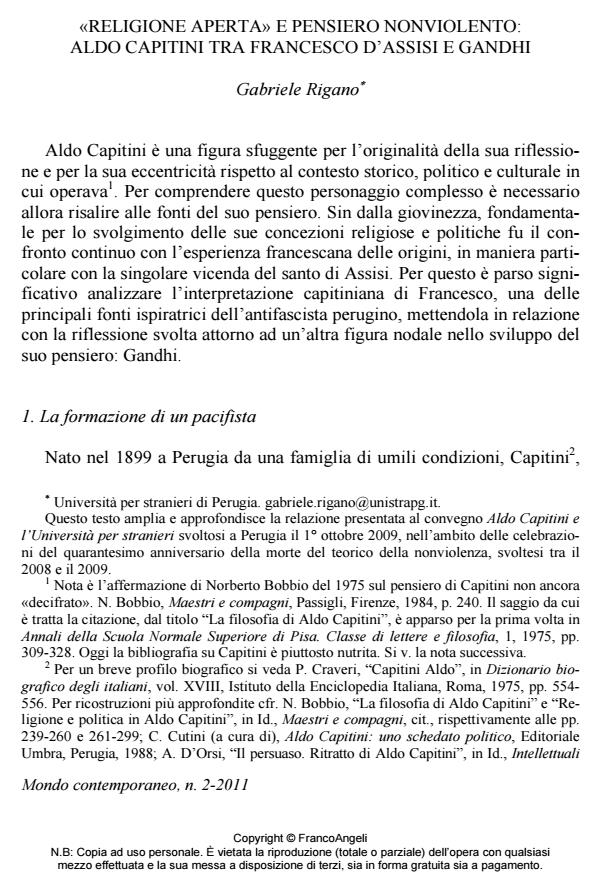«Open Religion» and Nonviolent Thought: Aldo Capitini Between Francesco d’Assisi and Gandhi
Journal title MONDO CONTEMPORANEO
Author/s Gabriele Rigano
Publishing Year 2011 Issue 2011/2 Language Italian
Pages 47 P. 31-77 File size 452 KB
DOI 10.3280/MON2011-002002
DOI is like a bar code for intellectual property: to have more infomation
click here
Below, you can see the article first page
If you want to buy this article in PDF format, you can do it, following the instructions to buy download credits

FrancoAngeli is member of Publishers International Linking Association, Inc (PILA), a not-for-profit association which run the CrossRef service enabling links to and from online scholarly content.
This essay analyzes the sources which inspired Capitini’s thought, starting from the influence that the Franciscan experience of the origins exerted over Capitini’s anti-Fascism, especially at existential, pre-political level. Also the comparison with Gandhi, another of Capitini’s great inspirers, is enlightening, since the nationalist Indian leader appears to be a reference of some importance only in the late years of the post-war period. Francesco d’Assisi appears to be, from this point of view, the most lasting inspired of Capitini’s thought and action from the Twenties to the full maturation of his non-violent thought. Then the essay concentrates on the sources of Capitini’s interpretation of Francesco d’Assisi, finding them out in the thought of Giovanni Gentile, a fundamental but little acknowledged interlocutor of Capitini. In the late years of the post-war period, the reference to Gandhi acquires primary importance even if it never obscures the name of Saint Francis, to whom Capitini’s most lasting realization is connected: the march for peace from Perugia to Assisi.
Keywords: Aldo Capitini, Mahatma Gandhi, Francis of Assisi, Giovanni Gentile, nonviolence, anti-fascism
Gabriele Rigano, «Religione aperta» e pensiero nonviolento: Aldo Capitini tra Francesco d’Assisi e Gandhi in "MONDO CONTEMPORANEO" 2/2011, pp 31-77, DOI: 10.3280/MON2011-002002